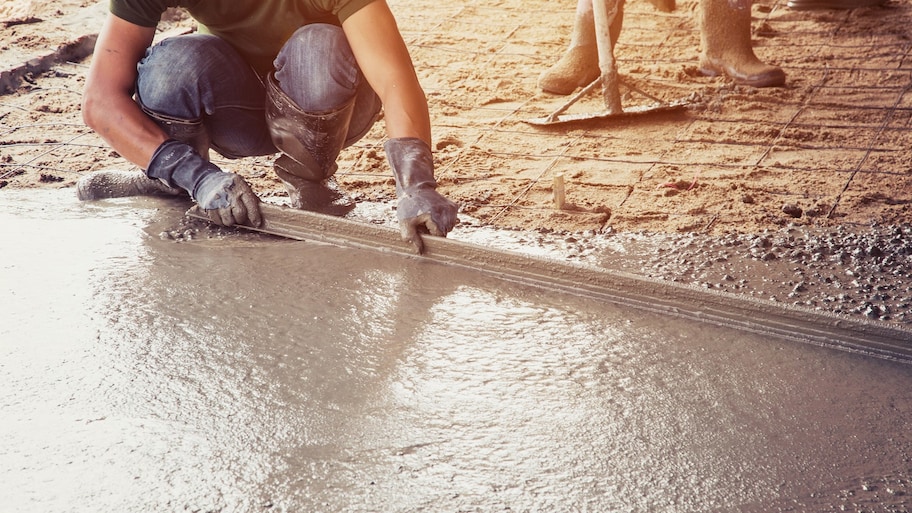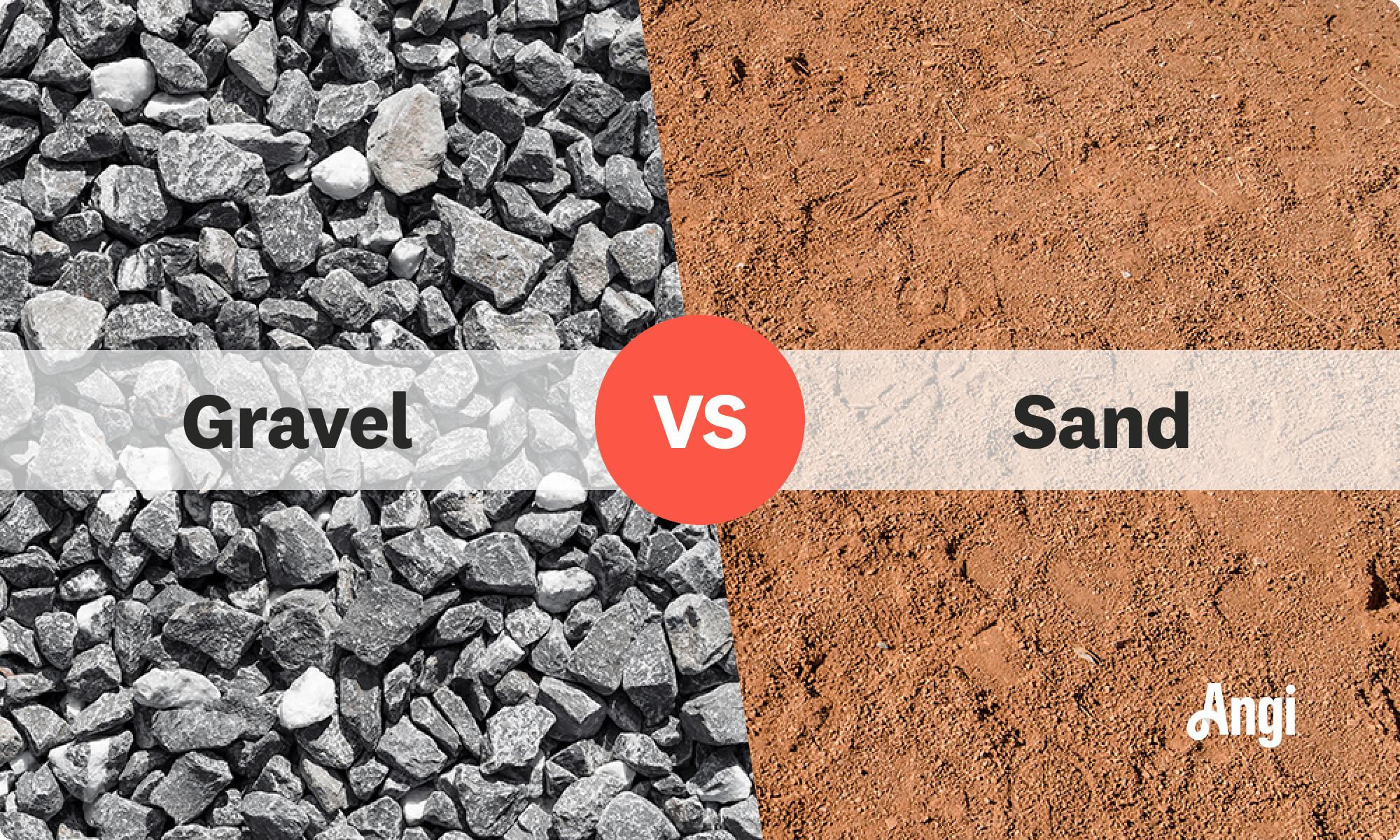Should I Use Sand or Gravel as a Base for Concrete?
Using sand as a concrete base may create trouble down the road


Highlights
Use a base under your concrete slab to prevent cracks and breaks.
Many homeowners use “subgrade” and “subbase” interchangeably, but they are different things.
Avoid using sand as a subbase.
Just as every home needs a good foundation, your property’s concrete slab needs a good subbase to function properly. Contractors sometimes use sand as a subbase when pouring concrete, but it all depends on the slab’s function as well as your region’s climate. A good contractor will know your area and help guide you in the right decision, but here are some things to keep in mind.
Why Do You Need a Base?
The simple answer is to prevent the concrete from cracking and breaking. If you provide a good foundation for your concrete, it will last longer, and you won’t have to repour it in a few years. If you don’t, any shifting that goes on in the dirt below your slab will cause cracks and blemishes that can be unsightly at best and dangerous in more extreme circumstances.
Subgrade vs. Subbase
Subgrade and subbase are two terms thrown around when talking about pouring concrete, and though they look similar, they refer to different things.
The subgrade is soil (usually the soil already on the property) tamped down or compacted to withstand any weight loads. The subbase is a material brought in and laid down on the subgrade to provide more stability for the poured concrete.

How Does the Subgrade Soil Impact the Concrete Slab?
A properly prepared subgrade is crucial for a long-lasting concrete slab. Just as a great foundation of a house affects its long-term stability, concrete must sit on a sturdy and nearly unchanging base for complete effectiveness.
Contractors will tamp down the soil below where the subbase will eventually live. The process ensures the soil is able to hold the weight of the concrete and that it is even for an equally even concrete surface. The team may also remove large rocks and fill in dents to keep the concrete from sinking.
If you do not prepare the subgrade soil, it will sink and settle as the weather shifts. You will then spot new concrete cracks, crumbling, and sinking. It can also buckle in the center or bow around the edges. All these issues increase the cost of the concrete slab over time.
Is Sand a Good Base for Concrete?
Simply put, sand isn’t sturdy enough to work well as a subbase for something like a driveway. With areas like patios, which don’t require a ton of load-bearing capacity, sand as a subbase works fine, though it’s not as reliable as gravel. Sand doesn’t have the same load-bearing capacity, is too mobile even when tamped down, and moves if exposed to excessively wet or extremely dry conditions. If you have any concerns, contact your local concrete driveway pro for clarification.
It is also difficult to maintain a level sand surface when pouring concrete, and therefore difficult to maintain a uniform thickness of the concrete slab. Using sand as a base also requires more concrete; the softer base beneath the slab means you have to use at least an additional inch of poured concrete.
Do You Need Gravel Under Concrete?

When pouring concrete—especially for something like a driveway—most contractors choose gravel as their subbase. The “grade” of the gravel (the size of the pebbles) depends on the project. Most local building departments have some guidelines on the grade of gravel they require for construction projects.
The Asphalt Institute and American Concrete Institute also have recommended driveway gradation sheets on their websites. If all else fails, your local street or highway department usually has standard materials that they use when pouring roads and freeways. Your materials supplier should know what the subbase materials are and be able to supply them to you.
Putting gravel under concrete isn’t necessary, but it comes with numerous benefits.
Some key things that gravel does are:
Strengthen the concrete mix
Keep the slab in place
Highlight weak points
Help with drainage
Provide a level surface
Best Type of Gravel to Use as a Base for a Concrete Slab
While you'll spot many names and slight variations, driveway gravel often comes in jagged, 3/4- to 1-inch pieces. The gravel has been washed and screened—basically sorted through to remove all smaller pieces of gravel that broke off in the mix. The uniformity and shape of this gravel allow for maximum permeability and compaction.
In most cases, smaller and rounded gravel varieties (such as pea gravel) lack the structural strength of larger pieces. As we mentioned above, you can technically use sand under some concrete slabs, such as walkways, but you'll almost always need a stronger material for driveways and roads.
Gravel varieties may even vary depending on whether you are working with concrete or asphalt—though the process is similar.
Does a Sand Base Cause Cracks in Concrete?
Not necessarily. The tendency of sand to shift and cause cracks depends on several factors, including the environment, conditions when it was laid down, and whether it was correctly compacted during installation. It also depends on the size of the loads placed on the slab, such as a patio (people and furniture) versus a driveway (cars).
As a general rule, stay away from using sand as a subbase. You’re better off using gravel. Your concrete will last longer and have less of a chance of cracking over time.
Amy Pawlukiewicz contributed to this piece.
Frequently Asked Questions
You should put gravel that is 3/4 to 1 inch under a concrete slab. However, depending on the project, local building codes may dictate the proper gravel size and shape. Some concrete slabs that do not hold significant weight may have a subbase of sand. Also, keep in mind that the subbase you choose will affect the cost of your concrete patio, walkway, or driveway.
If you don’t put gravel under concrete, the concrete can crack, sink, bow, or crumble. Even the concrete forming process will not go as smoothly if you are working directly on the soil or bare bedrock. The lack of a proper gravel layer can also lead to drainage issues below your slab, leading to water issues throughout your lawn and around your foundation.
It is not advisable to pour concrete directly on dirt. Even compacted soil—known as a subgrade—is not strong enough to maintain the form of concrete. You can, however, pour concrete over concrete as long as the overlay has proper bonding agents and the slab below is clear of damage.
